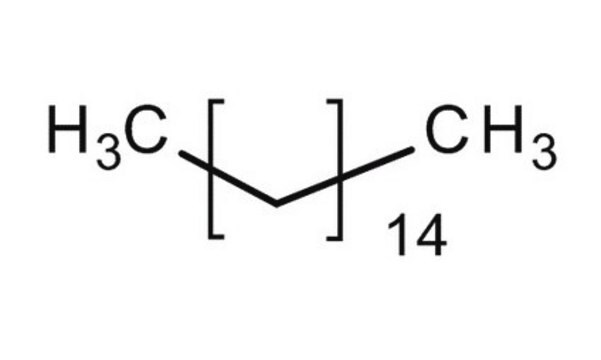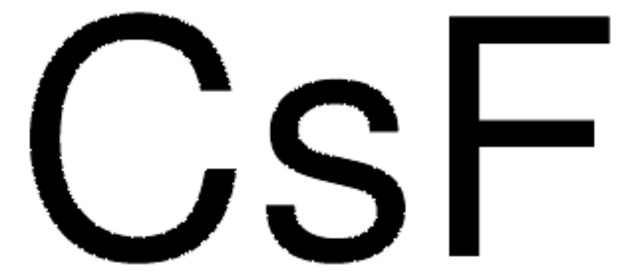296317
Hexadecane
anhydrous, ≥99%
Synonym(s):
n-Hexadecane, Cetane
About This Item
Recommended Products
grade
anhydrous
Quality Level
vapor density
7.8 (vs air)
vapor pressure
1 mmHg ( 105.3 °C)
Assay
≥99%
form
liquid
autoignition temp.
395 °F
impurities
<0.003% water
<0.005% water (100 mL pkg)
refractive index
n20/D 1.434 (lit.)
bp
287 °C (lit.)
mp
18 °C (lit.)
transition temp
solidification point 17.5-18.5 °C
density
0.773 g/mL at 25 °C (lit.)
SMILES string
CCCCCCCCCCCCCCCC
InChI
1S/C16H34/c1-3-5-7-9-11-13-15-16-14-12-10-8-6-4-2/h3-16H2,1-2H3
InChI key
DCAYPVUWAIABOU-UHFFFAOYSA-N
Looking for similar products? Visit Product Comparison Guide
Related Categories
Application
dioctylfluorene)-b-poly(3-hexylthiophene) via Grignard metathesis chain growth polymerization.
Signal Word
Danger
Hazard Statements
Precautionary Statements
Hazard Classifications
Asp. Tox. 1
Supplementary Hazards
Storage Class Code
10 - Combustible liquids
WGK
WGK 1
Flash Point(F)
233.6 °F
Flash Point(C)
112 °C
Personal Protective Equipment
Choose from one of the most recent versions:
Already Own This Product?
Find documentation for the products that you have recently purchased in the Document Library.
Customers Also Viewed
Protocols
Separation of Decane; Dodecane; Tetradecane; Hexadecane; Octadecane; Eicosane; Docosane; Tetracosane; Hexacosane; Octacosane
Separation of Hexane; Heptane; Octane; Nonane; Decane; Undecane; Dodecane; Tetradecane; Hexadecane; Octadecane; Eicosane; Tetracosane; Octacosane; Dotriacontane; Hexatriacontane; Tetracontane; Tetratetracontane
Our team of scientists has experience in all areas of research including Life Science, Material Science, Chemical Synthesis, Chromatography, Analytical and many others.
Contact Technical Service











